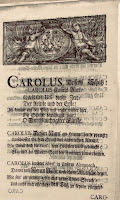Interpretation is an extremely subjective activity. The act of explaining the meaning of Bessler’s words and drawings results in an opinion which is bound to reflect the author’s personal convictions. I have published many interpretations which most people regard as speculation, but I stand by them, because I’m convinced of their authenticity.
The problem is exacerbated by other researchers also publishing their own opinions/speculations which may be correct but often leads to confusion among their readers. This looks like criticism but it isn’t, it’s just the way it is and in my opinion it’s better to have as many interpretations available as as possible, in the hope that one will lead to a reconstruction of Bessler’s wheel. I think that people will go with their favourite interpretation, one which accords with their own thoughts.
It is over three hundred years since Bessler published his work, and that was in German, which immediately creates the potential for confusion. It’s hard enough to get the precise meaning of every word written in English three hundred years ago, but trying to do the same translating into English from the original German, plus the idioms of Bessler’s time, and then add in some of his favourite obfuscation - ambiguity - and valid interpretation becomes fraught with perplexity!
But the drawings are another matter, there are no language barriers to hinder our understanding. But something which may appear to be an obvious mechanical design is not always the case, particularly where Bessler is concerned. His 141 illustrations known as Maschinen Tractate (MT) is full of designs which all appear to be failures, however his unfinished notes which accompany some of them, hint at subtle variations which could be helpful. But for me his most useful illustrations are the ‘Toys’ page and the one preceding it. What follows is my interpretation, but you may call it speculation!
MT 137, includes hints at 5 and 7 mechanisms. MT138,139,140 and 141 (Toys page) has almost everything you need to build his wheel, but there a few details without which it won’t work, but they are detailed elsewhere. I believe that the key to understanding the Toys page lies in looking at each figure without any preconceptions. In other words, trying not to see them as pieces of mechanisms designed to work as you would think they would, but as shapes, possibly designed to act differently to how you imagine..
So seeing item A as a Jacobs ladder is wrong. It is simply showing the five mechanisms linked together. Item B shows a twisted version of A. Items C and D show the same individual parts of A. The parts of the mechanism include one C and one D, but D is twisted so that one end points the opposite way. Item E looks like scissor jack but Bessler suggests that some items should be applied differently, and that, I believe is a crucial clue.
Bessler thinks highly of the scissor mechanism but his suggestion to apply it differently opens up a number of potential variants. I at least, believe I’ve interpreted the Toys page, but of course without a working model it’s just speculation!
Link to my granddaughter’s gofundme site https://www.helpamy.co.uk/
Link to my granddaughter’s gofundme site https://www.helpamy.co.uk/


















